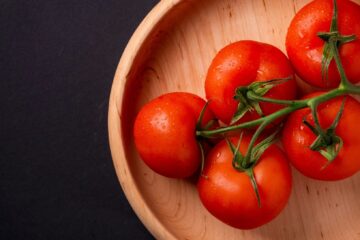 They’re here again. They’re back with a vengeance. The school term begins and bang, everyone starts ailing with colds, flu’s and stomach bugs. Is it the weather? Is it the gathering of vast hoards of small, inhibition-less children in small buildings? What happens at this time of year to make viruses appear more prevalent and what can we do to protect ourselves from them (the viruses, not the children)?
They’re here again. They’re back with a vengeance. The school term begins and bang, everyone starts ailing with colds, flu’s and stomach bugs. Is it the weather? Is it the gathering of vast hoards of small, inhibition-less children in small buildings? What happens at this time of year to make viruses appear more prevalent and what can we do to protect ourselves from them (the viruses, not the children)?
These germs are here all year round, they never go away. We have germs (viruses, bacteria, fungi) on our hands, in our mouths, our ears, our noses all the time. So why is it that for a lot of the time our bodies resist them and at other times, we let them in?
In Ayurveda we have the concept of Ojas, which literally means “vigour” and which can be likened to a general presence of immunity and strength. If this is high, our body and mind are resistant to attack internally and externally. If it is low, we don’t have the strength to resist the battle. Ojas is the refined end-product of all our tissue formation in the body, and is only produced if all our internal metabolic fires are working well – from our digestive fire and the processes of absorption to the processes of production and breakdown of the tissues. If our digestion isn’t working properly, none of the other metabolic ‘fires’ can work either, it’s a bit like a chain reaction. For a body and mind with strength, we need to make sure all those processes are working well, starting with our digestion, the most important driver behind all of these processes.
At this time of year, as the seasons change from warm to cool, the vata dosha increases and acts as a destabilising force. It disturbs the digestive and metabolic fires and thus acts to reduce our Ojas. It is the catabolic (breaking down) dosha so it isn’t great news for our strength when vata rises. Any great change, cold temperatures and winds cause vata to rise. Ojas wanes, immunity drops, we let those pesky viruses in.
The most important tool we have, then, against viruses is what we feed ourselves with, physically and mentally. It is more than just thinking, “Autumn is here, let’s have some vitamin C”. We need to eat nourishing, balanced meals which are easy on the digestion. For example; lots of lightly steamed vegetables in varying colours (a good sign that you have a great variety of nutrients), soups, a good balance of wholegrains and white grains, pulses, white meat in moderation (if you eat it), seeds, healthy oils and digestive herbs and spices. It’s definitely not a good time to start ladling on the dairy, as this tends to increase the formation of improperly formed kapha dosha (mucous), which will then clog up your channels and create some lovely breeding spots for the viruses.
The change of the seasons is also a good time to do a cleanse, to give your body a break for a bit from all the heavy, clogging food we eat and have a light simple diet for a week or 10 days, allowing our digestion to fire back up to maximum strength. Contact a practitioner to get some healthy and safe ways to do this.
We should look as well at the pace of our lives at this time of year. If we are using up all our energy in constant rushing from place to place, there will be no nourishment left for building and maintaining healthy tissues and the all-important Ojas. Take it a bit more easy; really ask yourself whether this particular task is necessary or just a habit or desire. This is something I personally find most difficult to keep an eye on, I just love doing! It takes its toll though and there is nothing like a few attacks of the viruses to make you realise this.
Folklore has always had it that we get colds when we are cold (hence the handy name). When germ theory came along in the late 19th century, this put paid to this idea for a bit. However, recent research has shown that, indeed, when our noses are cold, we ARE more likely to get colds. Ayurveda has always said that keeping warm prevents an increase of kapha and vata (those doshas involved in colds) so stick with the traditional approach, keep yourselves and your noses warm! It may even be worth wrapping a scarf around your nose if you are particularly susceptible, especially if you have a kapha or vata type constitution.
Ayurveda also has many fantastic localised methods to ensure your skin, noses and mouths are as inhospitable to viruses as possible and are strong, supple and resistant to attack. Here are a few of them:
- SKIN: massage your body as often as possible with unrefined sesame oil. This not only reduces vata, helps with circulation and skin tone and prevents dryness but also creates an environment that germs don’t like. Our skin is our biggest organ and protective barrier, look after it.
- NOSE: irrigate with salt water, especially if you are prone to rhinitis and sinusitis. A neti pot is great for this; it involves simply pouring warm salt water through each nostril and out the other. Apply sesame oil to the inside of your nose every morning to help keep it from drying in the cold, to keep the membranes strong and able to defend.
- MOUTH: swill your mouth out with warm sesame or coconut oil for the same effect in the mouth. Push and pull the oil between your teeth and gums and then spit it out. The oil not only protects the membranes, it’s also anti-bacterial.
Lastly, you can boost your immune system with some great Ayurvedic herbs and remedies. Culinary herbs such as ginger, cinnamon and thyme are well known for fuelling metabolic fires and boosting immunity. Stronger Ayurvedic medicinal herbs such as Amalaki and Guduci help you fight off attack while super-herbs Bala and Shatavari are excellent for strength.
Keep warm, keep strong and stave off those bugs. (And try to avoid school children…!)
Till next time, take care of yourselves.
Kate
Author: Kate Siraj, Ayurvedic Practitioner, BSc Ayurveda, MChem (Oxon), MAPA.
© The Ayurveda Practice
Photo thanks to FreeDigitalPhotos.net



0 Comments